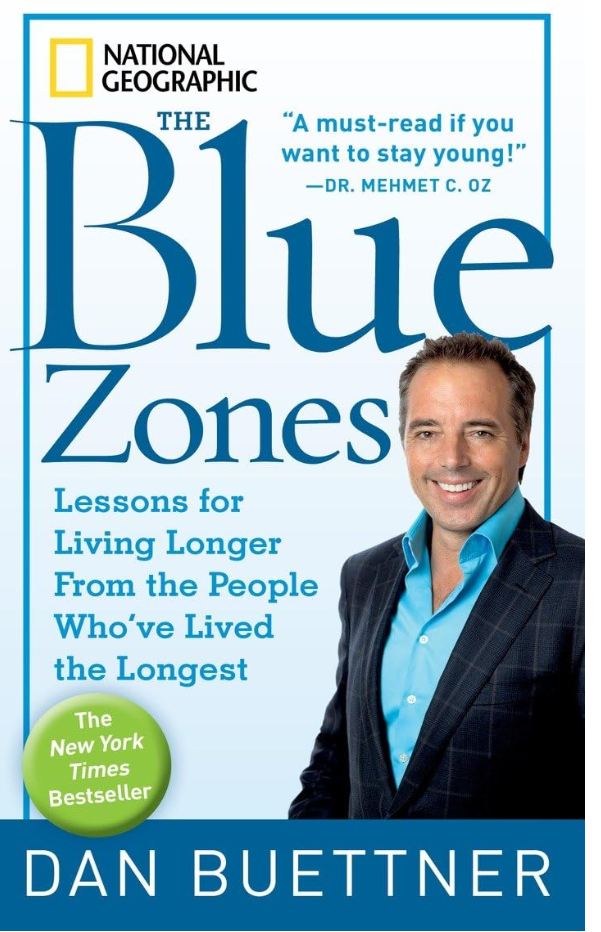Meals on Wheels luncheon explores habits leading to longevity as seen in 'Blue Zones'
- Oops!Something went wrong.Please try again later.
Are you interested in learning about how the folks who live the longest — and most healthful — lives do so?
Then consider attending Thursday, April 4, Meals on Wheels of the Palm Beaches’ annual More than a Meal Luncheon at the Kravis Center.
That’s because the event’s keynote speaker will be Sid Stolz, chief brand and experience officer for Blue Zones — an organization whose mission is to help people live longer, happier and healthier lives.
“We are pleased to have Sid Stolz joining us for our More than a Meal Luncheon,” said Pamela Calzadilla, president and CEO of Meals on Wheels of the Palm Beaches — a nonprofit organization whose mission is to nourish and enrich the lives of homebound seniors by delivering meals to those in need. “His presentation will include an invaluable perspective on how we can all embrace a healthier way of living.”
What are ‘blue zones’?

Perhaps you’ve heard of the catch-all term “blue zones.”
According to the company Blue Zones, the term was first coined by Dan Buettner, a National Geographic explorer and journalist, during an exploratory project he led in 2004. The project was precipitated after Buettner went to Okinawa, Japan, in 2000 to investigate the longevity of the people who live there.
Fascinated by their habits, he then decided to explore other regions of the world whose citizens reportedly had extreme longevity.
With the support of National Geographic, Buettner and his team of scientists and demographers traveled the world in search of communities where people not only lived longer but also enjoyed a high quality of life in their old age. After analyzing demographic data and interviewing numerous centenarians, they identified five regions that stood out for their residents’ longevity and vitality. We’re talking about people in their 90s and 100s who were still thriving.
According to Buettner and his team, the five regions were the following:
Sardinia, Italy
Okinawa, Japan
Nicoya, Costa Rica
Icaria, Greece
Loma Linda, California
Buettner has since written seven New York Times best-selling books on the topic: "The Blue Zones," "The Blue Zones Solution," "The Blue Zones Challenge," "The Blue Zones American Kitchen," "Blue Zones Secrets," "Thrive" and "Blue Zones of Happiness."
The ‘Power 9’

At Thursday’s event, Stolz will speak about the core principles followed by these longevity-blessed people.
The principles are known as the Power 9 and are found in some form in all blue zones. Buettner identified and described them thusly:
1. Move naturally: The world’s longest-lived people don’t pump iron, run marathons or join gyms. Instead, they live in environments that constantly nudge them into moving without thinking about it. They grow gardens and don’t have mechanical conveniences for house and yard work.
2. Purpose: The Okinawans call it “Ikigai” and the Nicoyans call it “plan de vida;” for both it translates to “why I wake up in the morning.” Knowing your sense of purpose is worth up to seven years of extra life expectancy.
3. Downshift: Even people in the blue zones experience stress. Stress leads to chronic inflammation, associated with every major age-related disease. What the world’s longest-lived people have that we don’t are routines to shed that stress. Okinawans take a few moments each day to remember their ancestors, Adventists pray, Ikarians take a nap and Sardinians do happy hour.
4. 80% rule: “Hara hachi bu” — the Okinawan, 2,500-year old Confucian mantra said before meals reminds them to stop eating when their stomachs are 80% full. The 20% gap between not being hungry and feeling full could be the difference between losing weight or gaining it. People in the blue zones eat their smallest meal in the late afternoon or early evening and then they don’t eat any more the rest of the day.
5. Plant slant: Beans, including fava, black, soy and lentils, are the cornerstone of most centenarian diets. Meat — mostly pork — is eaten on average only five times per month. Serving sizes are 3 to 4 ounces, about the size of a deck of cards.
6. Wine at 5: People in all blue zones (except Adventists) drink alcohol moderately and regularly. During Buettner's research he found that moderate drinkers outlived non-drinkers and concluded that the trick was to drink one to two glasses per day. (It should be noted, though, that in February The New York Times reported that "more and more research shows that even one drink per day can increase your chances of developing conditions like high blood pressure and an irregular heart rhythm, both of which can lead to stroke, heart failure or other health consequences.")
7. Belong: All but five of the 263 centenarians interviewed belonged to some faith-based community. Denomination doesn’t seem to matter. Research shows that attending faith-based services four times per month will add four to 14 years of life expectancy.
8. Loved ones first: Successful centenarians in the blue zones put their families first. This means keeping aging parents and grandparents nearby or in the home. (An added benefit: It lowers disease and mortality rates of children in the home too.) They commit to a life partner (which can add up to three years of life expectancy) and invest in their children with time and love. (This helps ensure that they’ll be more likely to care for you when the time comes.)
9. Right tribe: The world’s longest-living people chose — or were born into — social circles that supported healthy behaviors. For instance, Okinawans created ”moais” — groups of five friends who committed to each other for life. And it’s important to remember that research has shown that smoking, obesity, happiness, and even loneliness are contagious.
So the social networks of long-living people have helped further enhance their healthy behaviors and demonstrably longer, healthier lifespans.
If you go
What: More than a Meal Luncheon
When: 11 a.m. Thursday, April 4
Where: Kravis Center, 701 Okeechobee Blvd., West Palm Beach
Tickets: $225
Info: mowpb.org
This article originally appeared on Palm Beach Post: Meals on Wheels of the Palm Beaches’ lunch features Blue Zone living
